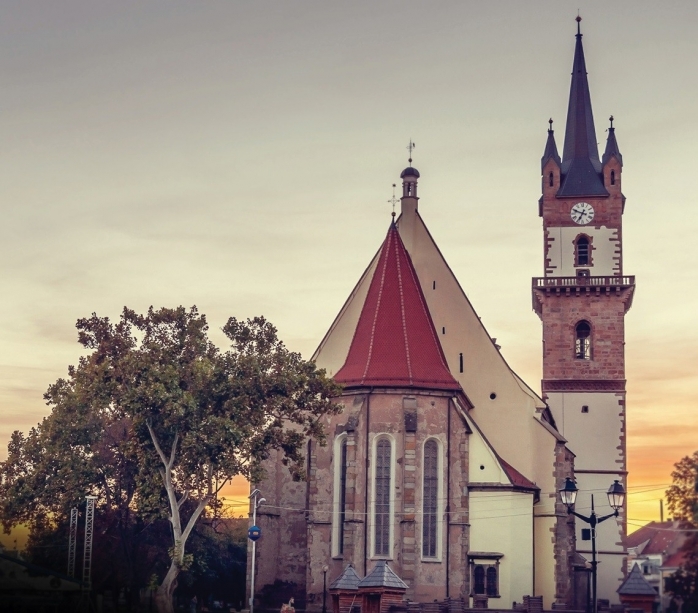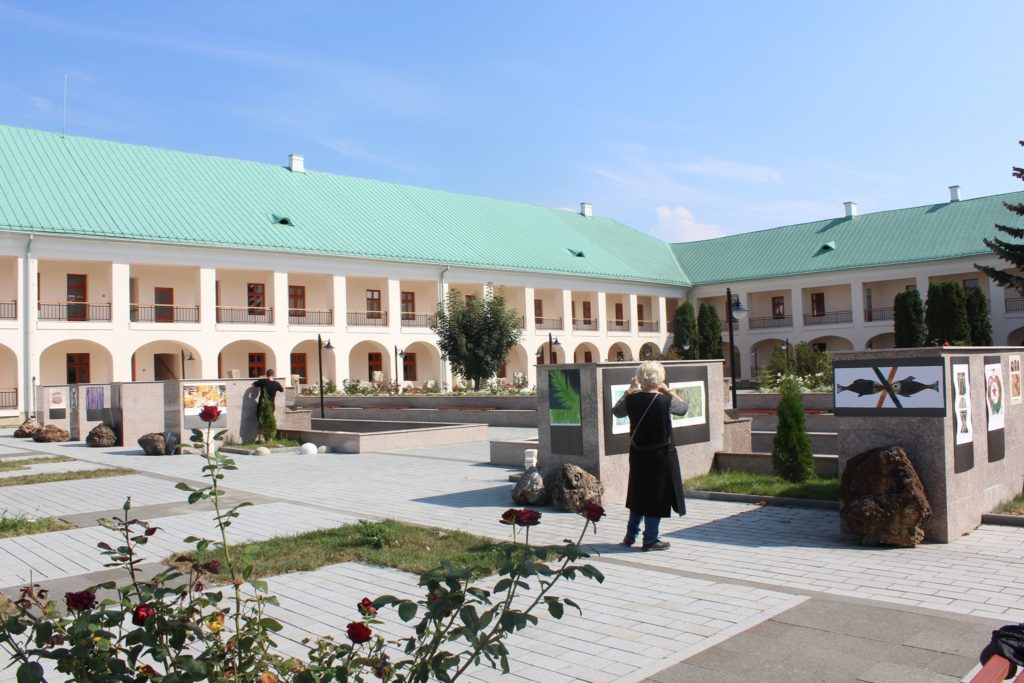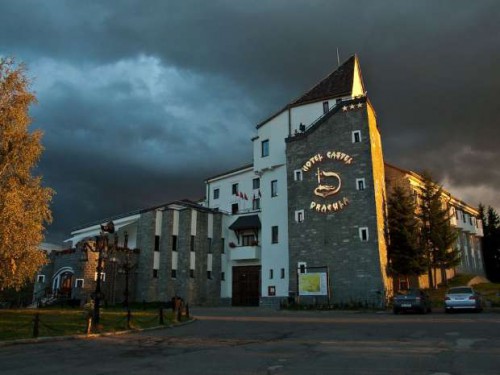Romania travel: Five reasons to visit Bistrița

The flourishing trade and crafts put Bistrița on the map of Transylvania’s burgs centuries ago. Now, the northernmost Saxon town in the country welcomes visitors to a refurbished old town, beautiful surroundings and histories to discover.
The tallest medieval tower in Romania
The Evangelical Church is a landmark of the city, representative for the transition from the Gothic style to that of the Renaissance in Transylvania. At 75 meters, the church’s tower is the highest medieval one in Romania, 1 meter taller than the tower of the Evangelical Cathedral in Sibiu.
 The tower of the Evangelical Church. Photo: bistritaturistica.ro
The tower of the Evangelical Church. Photo: bistritaturistica.roBeneath today’s church are the foundations of the church erected by the first Saxon colonists. As the settlement was thriving because of the active trade and crafts activity, a new church was erected in the second half of the 14th century, followed by various additions and adjustments, including a defense and surveillance tower and a clock, added before 1521, and replaced in 1861. The church was damaged in several fires, most recently in 2008, so its appearance changed a lot in time.
The church is one of the many medieval traces left in the city, including the Bistrița Fortress, built in the 13th century and rebuilt in the 15th and 16th centuries. The 22 guilds of the town built between 1464 and 1484 a complete fortification for the town, strengthened by ten towers and two bastions, and having three main access gates: the Gate of the Wood, the Gate of the Hospital, and the Hungarian Gate. That was the time when Bistrița became one of the most important towns in Transylvania, and one of its seven Saxon burgs (Siebenburgen). Today, only a part of the southern and eastern walls, and the Coopers’ Tower remain but the narrow streets linking the sides of the fortress still keep their charm.
A row of historical monuments
One of Bistrița’s landmark sites is the Sugălete ensemble of 13 buildings from the 15th to the 16th century, typical of the Renaissance constructions in Transylvania. It lines up one side of the country’s old square and the colorful buildings are connected through their spacious entrances, forming a gallery of 20 arches. The houses were inhabited by the town’s nobility.
 The Sugălete ensemble. Photo: bistritaturistica.ro
The Sugălete ensemble. Photo: bistritaturistica.roAmong the town’s other historical sites are the Minorite Monastery, first documented in the 13th century, the Andreas Beuchel House or the Silversmith’s House, a 16th century testimony to Bistrița’s potent goldsmiths’ guild. The latter, also notable because of its façade inspired by the Florentine architecture of the time, now hosts various exhibitions.
 The refurbished Bistrita County Museum. Photo:Complexul Muzeal Bistrita Nasaud Facebook Page
The refurbished Bistrita County Museum. Photo:Complexul Muzeal Bistrita Nasaud Facebook PageTo learn more on the history of the place you can always head to the recently refurbished Bistrița County Museum. Housed in a former garrison, the museum has archaeology, ethnography, and fine arts sections, all guarding a wealth of information about the area. The museum’s sections in the county include the Saxon House in Livezile, the Năsăud Border Museum, and the Rodna Mining Museum, among others.
An unexpected town symbol
Beginning with 1300, the ostrich features in the coat of arms of Bistriţa, as well as on the town’s seal. The crowned ostrich was also a symbol of the d’Anjou dynasty, which gifted it to the town for the support in a conflict with the Hungarian nobility. In 2011, several colorful statues of ostriches started filling the old part of the town, and trying to find them all can be one way to discover Bistriţa.
The Dracula connection
Fans of Bram Stoker’s novel would know that Bistriţa or Bistritz is where Jonathan Harker stopped on his way to meet Count Dracula. Some 46 km east of Bistriţa, visitors will find the Dracula Castle Hotel, in Piatra Fântânele.
 The project of the hotel began in 1976, when a director who coordinated the tourism in Bistrita thought it was time to take advantage of the fact that thousands of foreign tourists were coming to the area, brought here by Bram Stoker’s book. The hotel, which received the name Dracula Castle only after 1989, was put up for sale this year. Those who travel there also have the chance to see Bistriţa’s beautiful surroundings and the Tihuța Pass, described in the novel.
The project of the hotel began in 1976, when a director who coordinated the tourism in Bistrita thought it was time to take advantage of the fact that thousands of foreign tourists were coming to the area, brought here by Bram Stoker’s book. The hotel, which received the name Dracula Castle only after 1989, was put up for sale this year. Those who travel there also have the chance to see Bistriţa’s beautiful surroundings and the Tihuța Pass, described in the novel.
Beautiful surroundings
There are several large parks in or around the city, such as the Schullerwald Forest, the Municipal Park, or the Codrişor Hill, which also offers a nice view of Bistriţa. For winter tourists, a ski slope also opened in Bistriţa this year.
The surrounding areas have plenty of beautiful, scenic views to offer. About an hour drive from Bistriţa is the Colibiţa lake, which started to be more recognized as a tourist destination in recent years. The lake was created after the Colibița dam was built on the Bistrița river, and it is sometimes referred to as “the sea in the mountains.”
How to get there:
Bistrița is 450 km north of Bucharest, on the DN13/ E60, and 93 km north of Târgu Mureș, which can be reached by plane. From Cluj-Napoca, another city with an airport, Bistrița is a two-hour drive away on the DN1C/ E756. The train ride from Bucharest to Bistrița takes about 8 hours.
editor@romania-insider.com
(Opening photo: Shutterstock)















